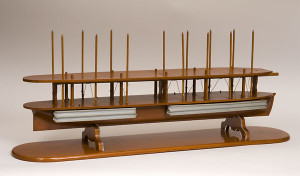 My Abraham Lincoln library began with a few books years ago and grew slowly into several shelves, then leapfrogged into several bookcases, and in seemingly one big bang expanded exponentially into several rooms. This week I took steps to consolidate the space (somewhat) and provide adequate space for new arrivals (at least temporarily).
My Abraham Lincoln library began with a few books years ago and grew slowly into several shelves, then leapfrogged into several bookcases, and in seemingly one big bang expanded exponentially into several rooms. This week I took steps to consolidate the space (somewhat) and provide adequate space for new arrivals (at least temporarily).
My basement library/office/reading room began with two glass-front barrister bookcases full of books about Abraham Lincoln. I added four short (2-shelf) bookcases, which formed a nice wall between my office area and the library/reading area. A few years ago I commandeered a room upstairs as a library annex, installing four tall bookcases of five and six shelves each. Those quickly filled up and three more tall bookcases squeezed themselves into the guest bedroom, though I admit two of them hold non-Lincoln books. And yet all this wasn’t enough; books stacked themselves onto my computer desk, my writing desk, my floors, and edges of couches. Stairways became queues of books in the process of being read. Something had to change.
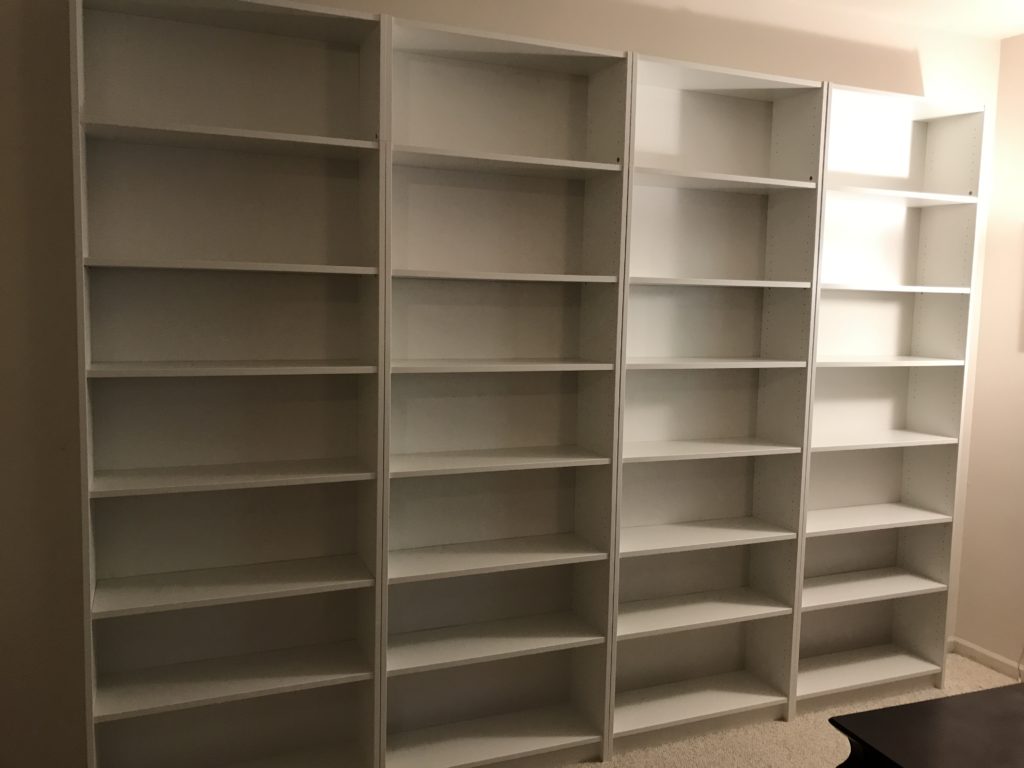
Ikea to the rescue. The four short bookcases have been re-purposed upstairs and replaced with four 7-shelf bookcases along one side of the room. I definitely like the look of a library wall. Ah, but the shelves didn’t stay empty long. They quickly looked like this.
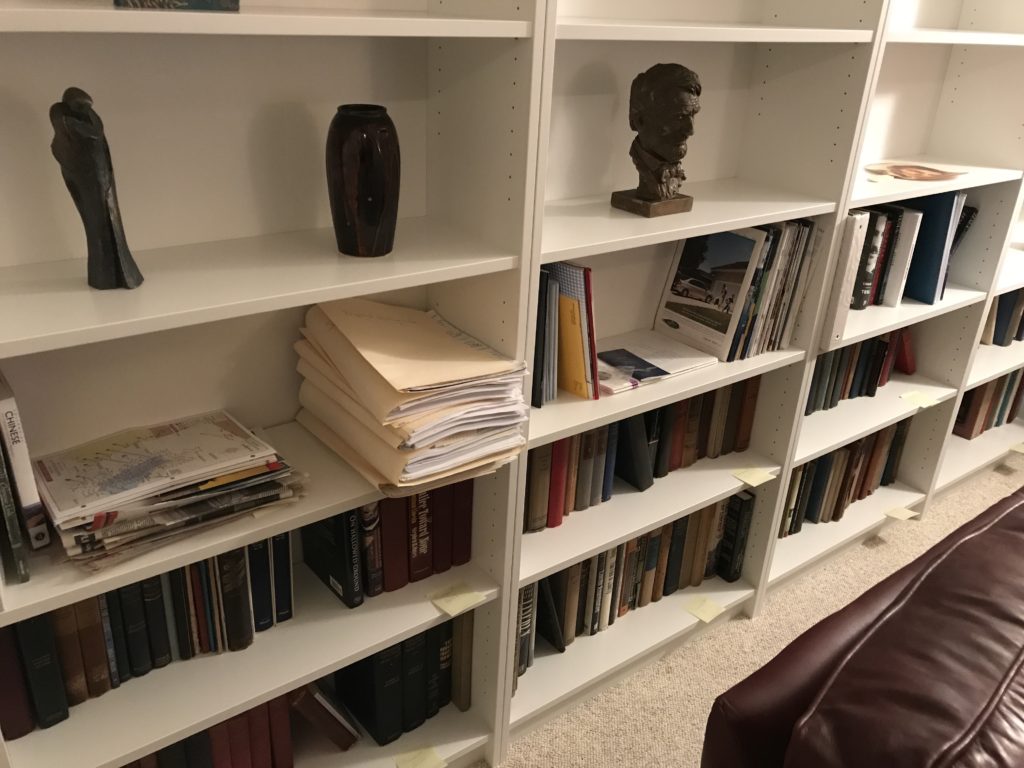
The short shelf books are in their new home along with background books on Nikola Tesla and Thomas Edison (research for past book projects) and some random files, magazines, and books previously piled randomly throughout the room. The best part is that I now have room to display some of my artwork, including the Lincoln bust in the center. How long it will take to fill the remaining space is anyone’s guess, but probably less time than I think.
Now that I have some space to play around with, I am reconsidering my organizational system, which can best be described as “in the order the books arrived.” I have a spreadsheet in which the shelf location of each book is listed so I can easily locate a particular resource for research. That works well enough, but I’m thinking about categorizing books by subtopics such as “assassination,” “full biography,” “childhood,” etc. A lot of books don’t fit nicely into this type of classification scheme, but it might be useful if I’m looking for a reference on his legal career, for example, without having to run all over the house to grab related books.
These are exciting times in Lincoln library land. My own Lincoln book will be put on the shelf within a few weeks and I’m already working on the next Lincoln book. I do have one favor to ask. My Facebook author page is sitting at 999 Likes, so if anyone reading hasn’t already liked it, can you run over and push me over 1000? Thanks in advance!
Meanwhile, check out my Goodreads author page. While you’re at it, “Like” my Facebook author page for more updates!
David J. Kent is the author of Lincoln: The Man Who Saved America, scheduled for release in summer 2017. His previous books include Tesla: The Wizard of Electricity and Edison: The Inventor of the Modern World (both Fall River Press). He has also written two e-books: Nikola Tesla: Renewable Energy Ahead of Its Time and Abraham Lincoln and Nikola Tesla: Connected by Fate.
Follow me by subscribing by email on the home page. And feel free to “Like” my Facebook author’s page and connect on LinkedIn. Share with your friends using the buttons below.



 On January 18, 2017, in celebration of the Old Naval Hospital’s 150th anniversary, Hill Center and the Lincoln Group of the District of Columbia will hold a celebration of Abraham Lincoln’s First Inaugural Address. In 1864 President Lincoln authorized $25,000 for construction of the (Old) Naval Hospital, which was completed in 1866, and the building has been restored to its 1860s condition to serve as Hill Center.
On January 18, 2017, in celebration of the Old Naval Hospital’s 150th anniversary, Hill Center and the Lincoln Group of the District of Columbia will hold a celebration of Abraham Lincoln’s First Inaugural Address. In 1864 President Lincoln authorized $25,000 for construction of the (Old) Naval Hospital, which was completed in 1866, and the building has been restored to its 1860s condition to serve as Hill Center.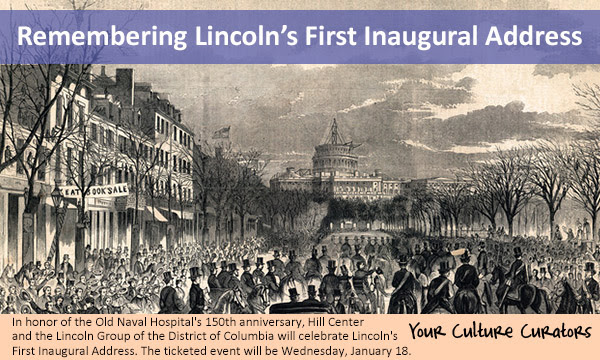
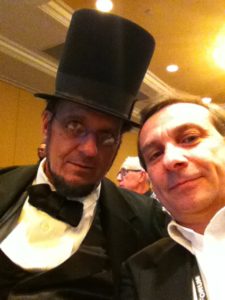
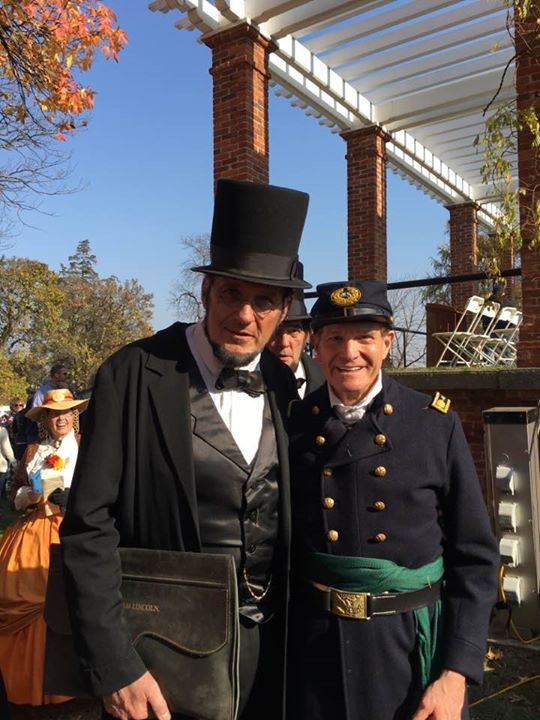
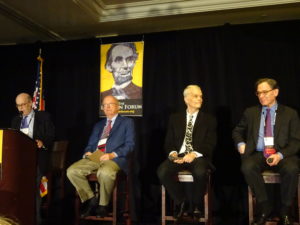
 Seven score and sixteen years ago the United States experienced a contentious election. The populace was terribly divided, one campaign openly pandered to the fears of white Americans, and the survival of the Union was in question. The winner of that election in 1860 was Abraham Lincoln, our 16th President.
Seven score and sixteen years ago the United States experienced a contentious election. The populace was terribly divided, one campaign openly pandered to the fears of white Americans, and the survival of the Union was in question. The winner of that election in 1860 was Abraham Lincoln, our 16th President.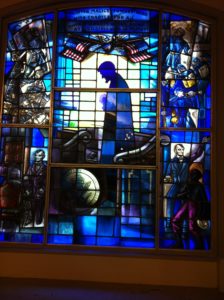
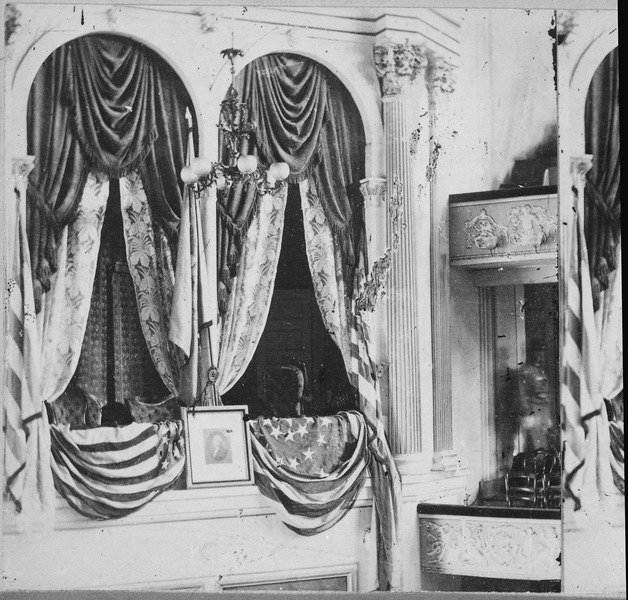
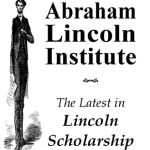 This past weekend I attended a fascinating day at Ford’s Theatre in Washington, DC, where the
This past weekend I attended a fascinating day at Ford’s Theatre in Washington, DC, where the 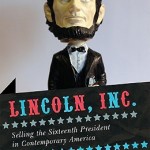
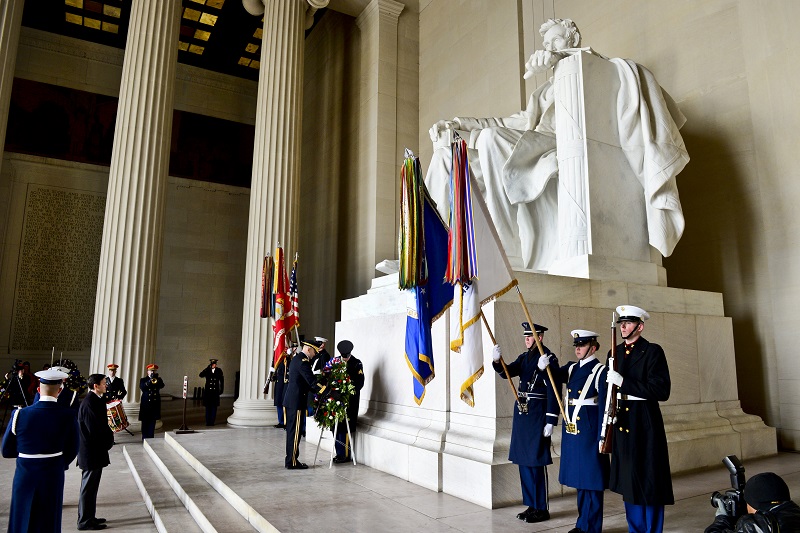
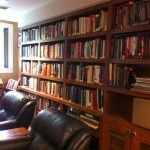 I’m still far short of the 15,000+ books published about Abraham Lincoln, but did make several great acquisitions for my collection in 2015. The following list shows 59 new additions, almost exactly the number
I’m still far short of the 15,000+ books published about Abraham Lincoln, but did make several great acquisitions for my collection in 2015. The following list shows 59 new additions, almost exactly the number 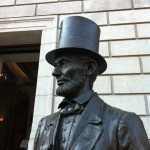 Tuesday, October 20, 2015 will be a first for me. After giving well over a hundred presentations on science topics I give my first official presentation on Abraham Lincoln. I hope many more will follow.
Tuesday, October 20, 2015 will be a first for me. After giving well over a hundred presentations on science topics I give my first official presentation on Abraham Lincoln. I hope many more will follow.